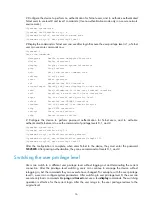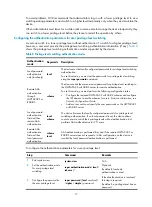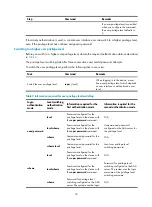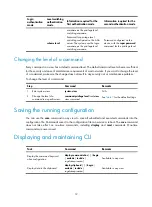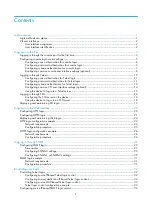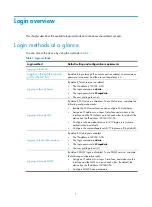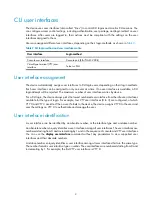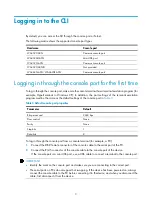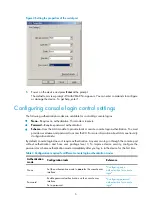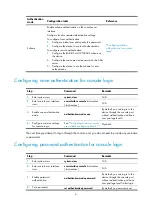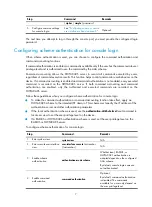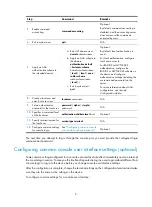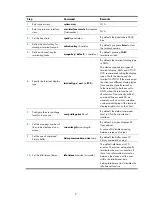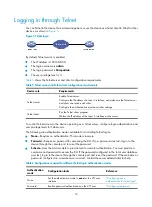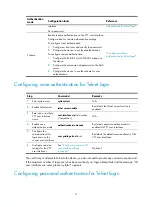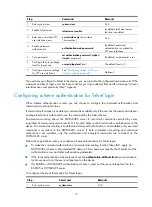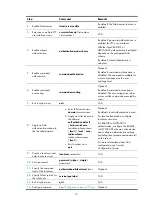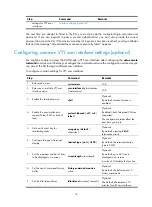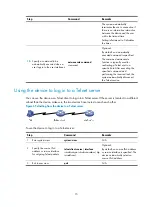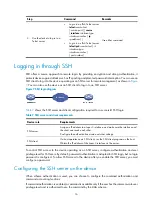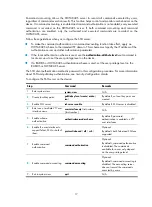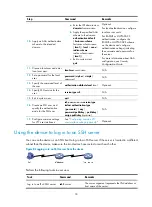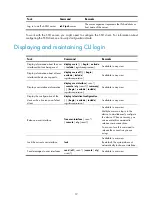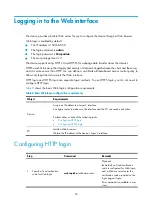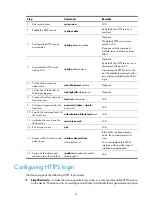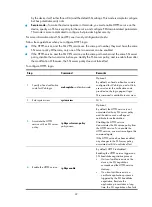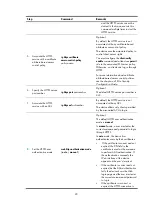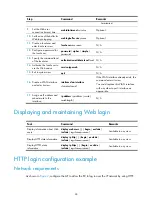
9
Step Command
Remarks
1.
Enter system view.
system-view
N/A
2.
Enter console user interface
view.
user-interface console
first
-
number
[
last-number
]
N/A
3.
Set the baud rate.
speed
speed-value
By default, the baud rate is 9600
bps.
4.
Define the shortcut key for
starting a terminal session.
activation-key
character
By default, you press
Enter
to start
the terminal session.
5.
Define a shortcut key for
terminating tasks.
escape-key
{
default
|
character
}
By default, pressing
Ctrl+C
terminates a task.
6.
Specify the terminal display
type.
terminal type
{
ansi | vt100
}
By default, the terminal display type
is ANSI.
The device supports two types of
terminal display: ANSI and VT100.
H3C recommends setting the display
type of both the device and the
terminal to VT100. If the device and
the client use different display types
(for example, HyperTerminal or
Telnet terminal) or both are set to
ANSI, when the total number of
characters of the currently edited
command line exceeds 80, an
anomaly such as cursor corruption
or abnormal display of the terminal
display might occur on the client.
7.
Configure the user privilege
level for login users.
user privilege level
level
By default, the default command
level is 3 for the console user
interface.
8.
Set the maximum number of
lines to be displayed on a
screen.
screen-length
screen-length
By default, a screen displays 24
lines at most.
A value of 0 disables pausing
between screens of output.
9.
Set the size of command
history buffer.
history-command max-size
value
By default, the buffer saves 10
history commands at most.
10.
Set the idle-timeout timer.
idle-timeout
minutes
[
seconds
]
The default idle-timeout is 10
minutes. The system automatically
terminates the user's connection if
there is no information interaction
between the device and the user
within the idle-timeout time.
Setting idle-timeout to 0 disables the
idle-timeout function.

